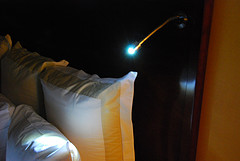- 1 read

Residential buildings can reduce their CO2 emissions substantially by switching to LED lighting, based on research by the Department of Energy (DOE) and Energy Information Administration (EIA). Analysis of 2009 reports shows that residences can reduce their CO2 emissions by 8 pounds per dollar saved on their energy bill.
According to the EIA, in July of 2009, the average retail price of electricity for the residential sector was 11.96 cents per kilowatt-hour. The average residential cost of natural gas was $2.50 per therm, and oil was $2.95 per gallon. The CO2 emissions for electricity were calculated at 1.54 pounds per kWh, while natural gas emitted 11.95 pounds per therm, and oil produced 21.96 pounds per gallon.
Analysis of heating, ventilation and air conditioning (HVAC) costs are accounted for when averaging out the net CO2 emissions of an average residential energy bill. For households using 50% HVAC with natural gas, the CO2 emissions per dollar are 8.8 pounds. The emissions accounted for 10.2 pounds per dollar spent for residences using 50% on HVAC with oil supplements, and 12.9 pounds for houses using electric heat.
This implies that for every dollar saved on energy bills, residences are reducing their CO2 emissions. Based on energy sources for the average U.S. household, the typical residence will produce about 8.3 pounds of CO2 per dollar spent on energy.
In an effort to curb this startling output, homeowners are finding that LED lights are one of the easiest ways to substantially reduce electricity bills. The new light emitting diode (LEDs) lights consume about 90% less energy than traditional incandescent lights and 50% less than fluorescents. Households are converting to LEDs for their cost-effective energy use, as well as the impact the bulbs have on a residence’s CO2 emissions.
The new lighting technology is just realizing the potential of its marketability, as LED bulbs are now compatible to fit any existing fixture in the U.S. Other countries have already begun to wean away from the inefficient incandescent lights, as Australia and Europe have already made plans to significantly limit the use old bulbs.
The Australian Federal Government announced that it would restrict the sale of standard incandescent bulbs by 2010, while the E.U. plans to phase them out by 2011 and 2012. Governments have used measures to motivate their populations into environmental consciousness, and businesses are beginning to realize the financial incentives for “going green.”
According to case studies, LED users are seeing a return on investment typically within the first two years, but the lights can last anywhere from 9–40 years, based on use. As households and businesses strive to reduce their costs and environmental impact, LED lights are illuminating the market.

